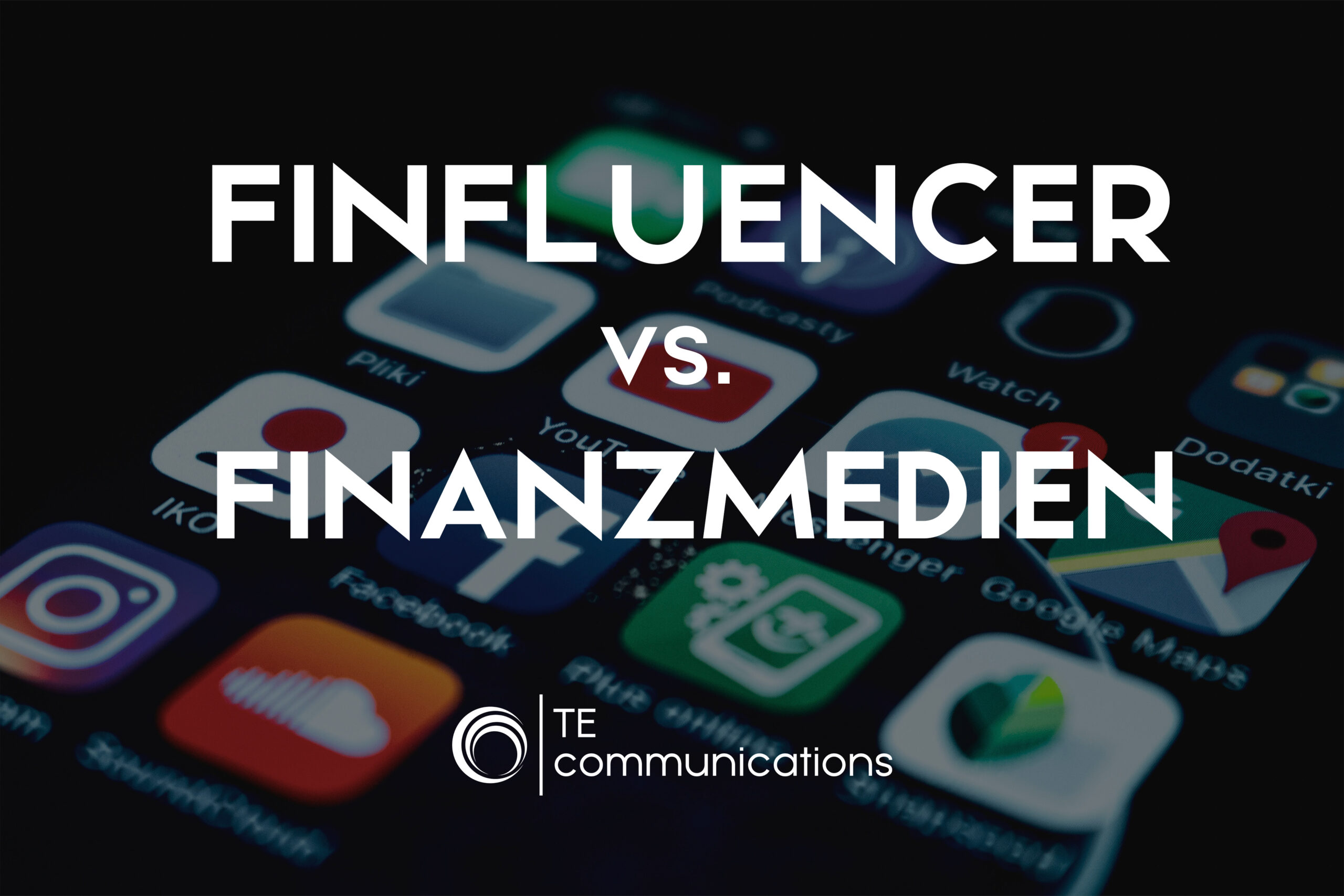Blog post by Jule Friedrich, Creative Digital Specialist at TE Communications.
Financial communication has undergone fundamental changes in recent years. Traditional business media such as Handelsblatt or The Pioneer are experimenting with new formats. The question is: are both sides trying to penetrate the other’s business area or are they benefiting from each other?
Traditional business media such as Handelsblatt are increasingly working with influencers and offering formats directly from the New York Stock Exchange. At the same time, successful finfluencers such as Finanzfluss or Madame Moneypenny are increasingly integrating journalistic standards into their content or bringing in experienced financial journalists to provide their community with high-quality content. These developments raise the question: Are both sides trying to disrupt each other’s business, or are they trying to adapt to each other?
- How traditional media works with influencers
Traditional financial media are recognising the reach and impact of finfluencers and are looking to collaborate. Joint formats allow them to target younger audiences and strengthen their digital presence. These collaborations allow media houses to present their content on platforms that are particularly popular with younger users, thereby increasing their reach.
Handelsblatt: Economy as seen from Wall Street
Handelsblatt has created an innovative format that reports directly from the New York Stock Exchange. Complex economic developments are presented to a wider audience in the form of videos and podcasts. It is not just about traditional financial journalists – there are also interviews with finfluencers and social media personalities to bring in their perspectives.
The Pioneer: Independent financial journalism meets digital formats
The Pioneer, the digital media company founded by Gabor Steingart, focuses on podcasts and newsletters to make business, politics and society understandable to a broad audience. The Pioneer regularly invites experts and influencers to its formats to shed light on current issues from different perspectives. This collaboration builds a bridge between traditional journalism and the dynamic world of content creators.
- Finfluencers bring journalistic expertise to the table
While traditional media are experimenting with new platforms and storytelling styles, finfluencers are professionalising and bringing experienced journalists on board.
Finanzfluss: YouTube meets financial journalism
Finanzfluss, one of Germany’s largest finfluencers, has raised its content to a new level by integrating renowned journalists. Mary Abdelaziz-Ditzow, previously Head of Business & Innovation at ntv, has been appointed Editor-in-Chief of Business & News. At the same time, Maximilian Senff, former head of the social media team at Table.Media, is now supporting the strategic development of the social media channels.
These developments show that Finfluencers are no longer just hobby bloggers, but are building professional media businesses.
- Competition or cooperation?
While media companies value the authentic and direct approach of influencers, they benefit from the journalistic expertise and credibility of established media.
✅ Traditional media is reaching new audiences through influencer formats.
✅ Finfluencers increase their seriousness and depth through journalistic expertise.
✅ Both sides use digital channels to better communicate financial knowledge.
It can be observed that both traditional media and finfluencers learn and benefit from each other. While media companies appreciate the authentic and direct approach of influencers, they benefit from the journalistic expertise and credibility of established media. Rather than competing with each other, a symbiotic relationship is emerging that aims to make financial literacy more widely available and accessible.
The boundaries between traditional financial media and financial influencers are becoming increasingly blurred. Through collaboration and cross-fertilisation, a new form of financial communication is emerging that increases both reach and quality of content. This development ultimately benefits consumers, who benefit from more diverse and accessible financial information.




